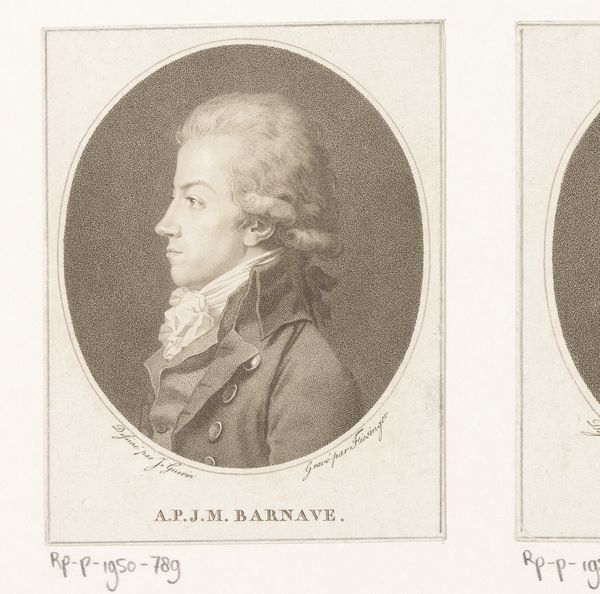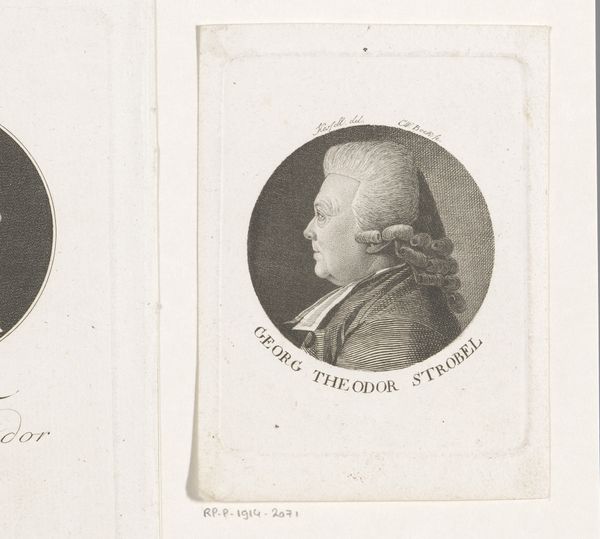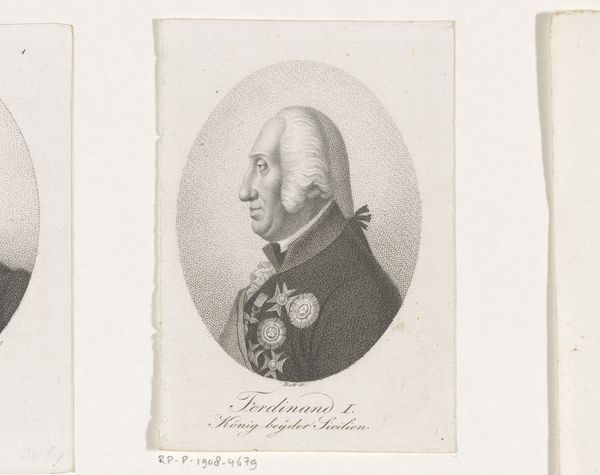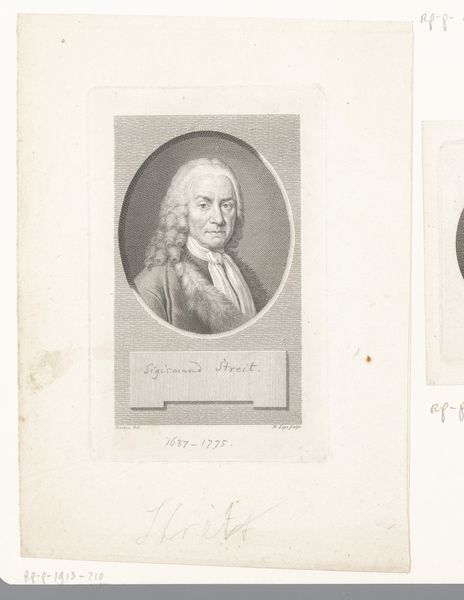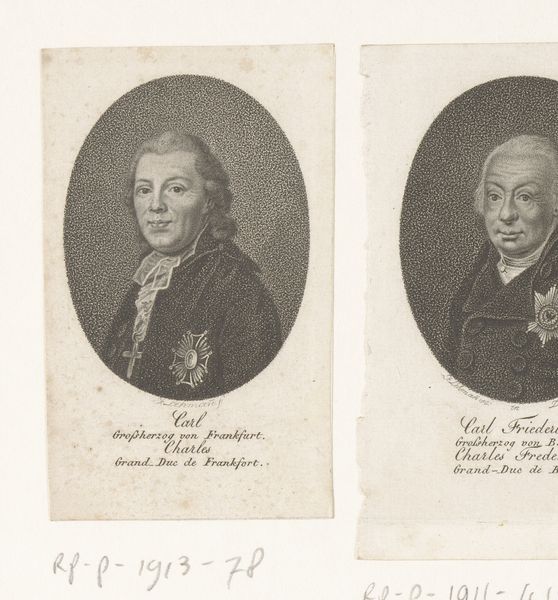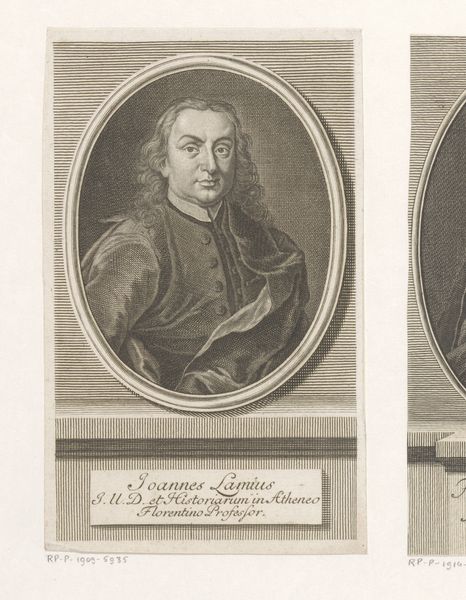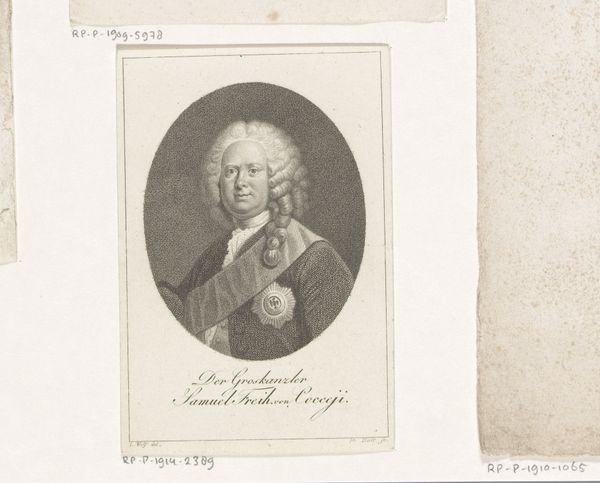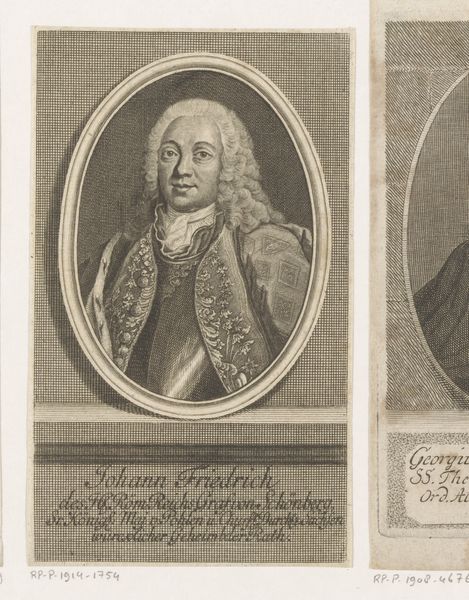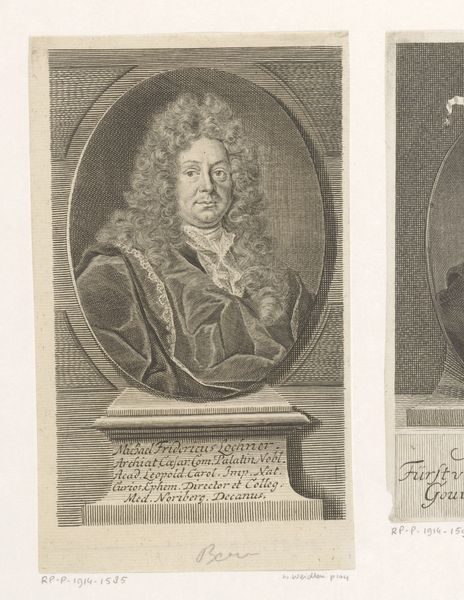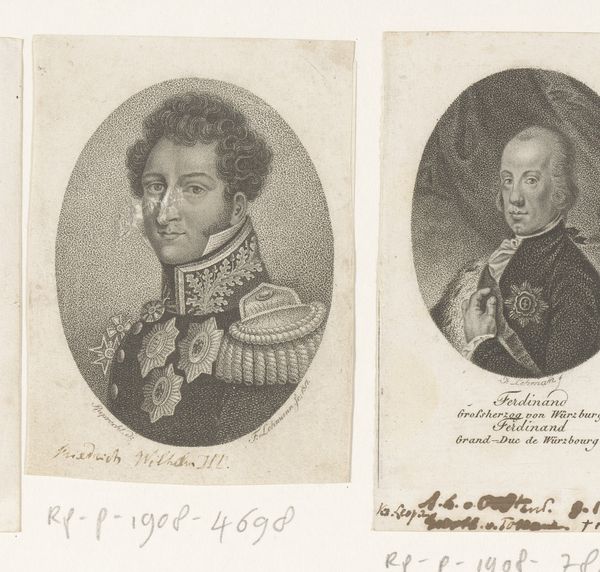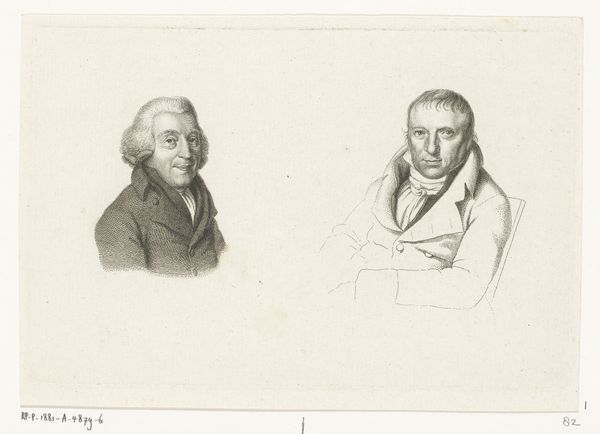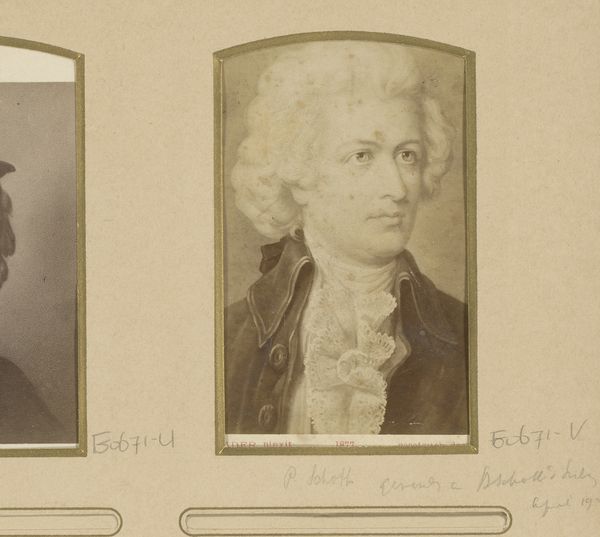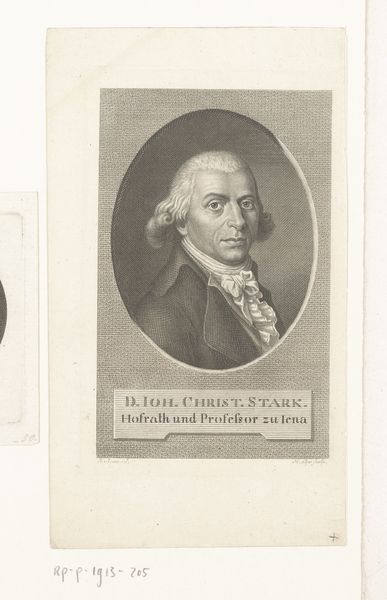
print, engraving
#
portrait
#
neoclacissism
#
aged paper
# print
#
line
#
history-painting
#
engraving
Dimensions: height 107 mm, width 87 mm
Copyright: Rijks Museum: Open Domain
Curator: I’m immediately struck by the formal composure in this profile. It almost feels like a coin or a cameo, evoking a sense of established power. Editor: Indeed. Here we have "Portret van Alexandre Lameth," an engraving executed between 1790 and 1807 by Franz Gabriel Fiesinger, housed right here in the Rijksmuseum. Lameth was, of course, a significant figure in the French Revolution. Curator: It’s remarkable how even in a small engraving, certain symbolic gestures come through. That severe profile, the powdered wig--they all contribute to a very particular image of aristocracy on the brink. Do you sense a fragility too, though? Editor: I think you pinpoint something crucial. Neoclassical portraiture was used to bolster a kind of historical continuity, to visually reinforce a specific socio-political ideology. Curator: But look closely at the eyes. There’s something very contained, even anxious, perhaps aware that the image of unwavering authority is, even at this moment, being actively contested. The engraving captures this pivotal tension. It is so delicate. The artist made good use of lines. Editor: That tension resonates throughout the symbolism of the French Revolution. From an intersectional perspective, we can consider how clothing, particularly wigs, functioned as class and gender signifiers during this era. Lameth's extravagant wig, on one hand, solidifies his aristocratic identity and his role as someone with the means to perform that class position, and yet these visual signifiers were also highly ridiculed by revolutionary satire. The weight of that historical context is impossible to ignore when examining this image. Curator: So, even within what might seem like a simple profile portrait, we find ourselves at the nexus of social upheaval and individual identity. The engraving becomes an accidental artifact documenting these cultural and political forces. Editor: It’s fascinating to peel back the layers and recognize the intricate web of signs woven within a single image. It encourages me to view every face I encounter as a possible portrait reflecting and refracting complex moments in our shared story.
Comments
No comments
Be the first to comment and join the conversation on the ultimate creative platform.
